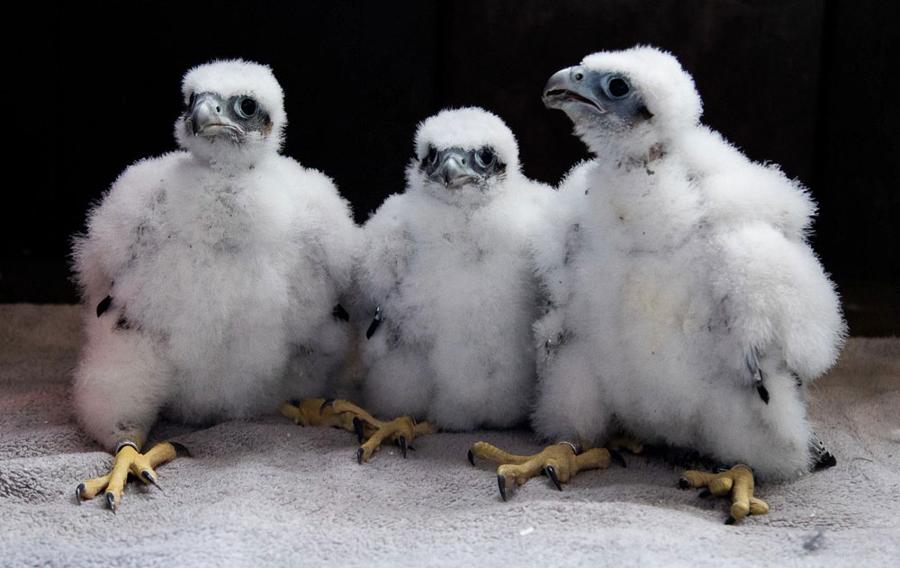
News from the Nest: Three New Peregrine Falcons
Hatch in Downtown Madison
by Mariama Bah, age 14
[Para leer la versión en español de éste artículo, puedes visitar éste enlace]
Since 2015, peregrine falcons Trudy and Melvin have been nesting at the Blount Generating Center owned by Madison Gas and Electric (MGE). Three chicks hatched in May and were named and banded on June 3rd. MGE decided to name them after the neighborhoods that surrounded them when they were born. The male falcon was named Willy, after Williamson Street. Willy’s sisters, Jennifer and Brearly, were named after Jennifer Street and Brearly Street.
In the 1950s, peregrine falcons were a fairly common species in North America. But by the 1960s, their population was declining quickly. Scientists discovered this decline was due to the widespread use of DDT, an effective yet harmful insecticide used in gardens and on farms. The DDT directly affected the food-chain and falcon physiology. Specifically, it caused the birds to lay fragile eggs and ignore their young.
In 1971, Wisconsin was
the first state to ban DDT
, but by that time, peregrine falcons were considered extinct in the state. Recovery has been slow, with biologists breeding them in captivity, but they are hopeful.
Falcons from Minnesota were bred in Wisconsin in 1986 and released the following year. Nesting boxes found all over the state support the recovery of the falcons. These boxes are safe places for them to lay their eggs. Trudy and Melvin’s nesting box at MG&E faces south and overlooks Williamson Street.
The MG&E Blount Generating Station joined the falcon conservation effort in 1999 when an employee and his son constructed a nesting box for a school project and installed it at the station. Falcons Frightful and Vern first occupied the box ten years later. They hatched 11 chicks before being displaced by Trudy and Melvin who have had several generations of chicks over the years. Most chicks are named after well-known historical monuments, places, or things found in Madison.
MGE spokesperson, Steve Schultz said Willy, Jennifer, and Brearly are currently learning how to fly and may be able to leave the nest by August. MG&E has a falcon camera placed near the nesting box, but the camera is down. They cannot fix it without disturbing the falcons who are still living in the nesting box. A livestream of the falcons is accessible to the public through the website, mge.com/our-environment/falcons, and viewers can expect to watch the livestream this coming fall after the camera is fixed.
[Sources:
Wisconsin State Journal
;
MGE; Wisconsin DNR; Madison.com; allaboutbirds.org
]

